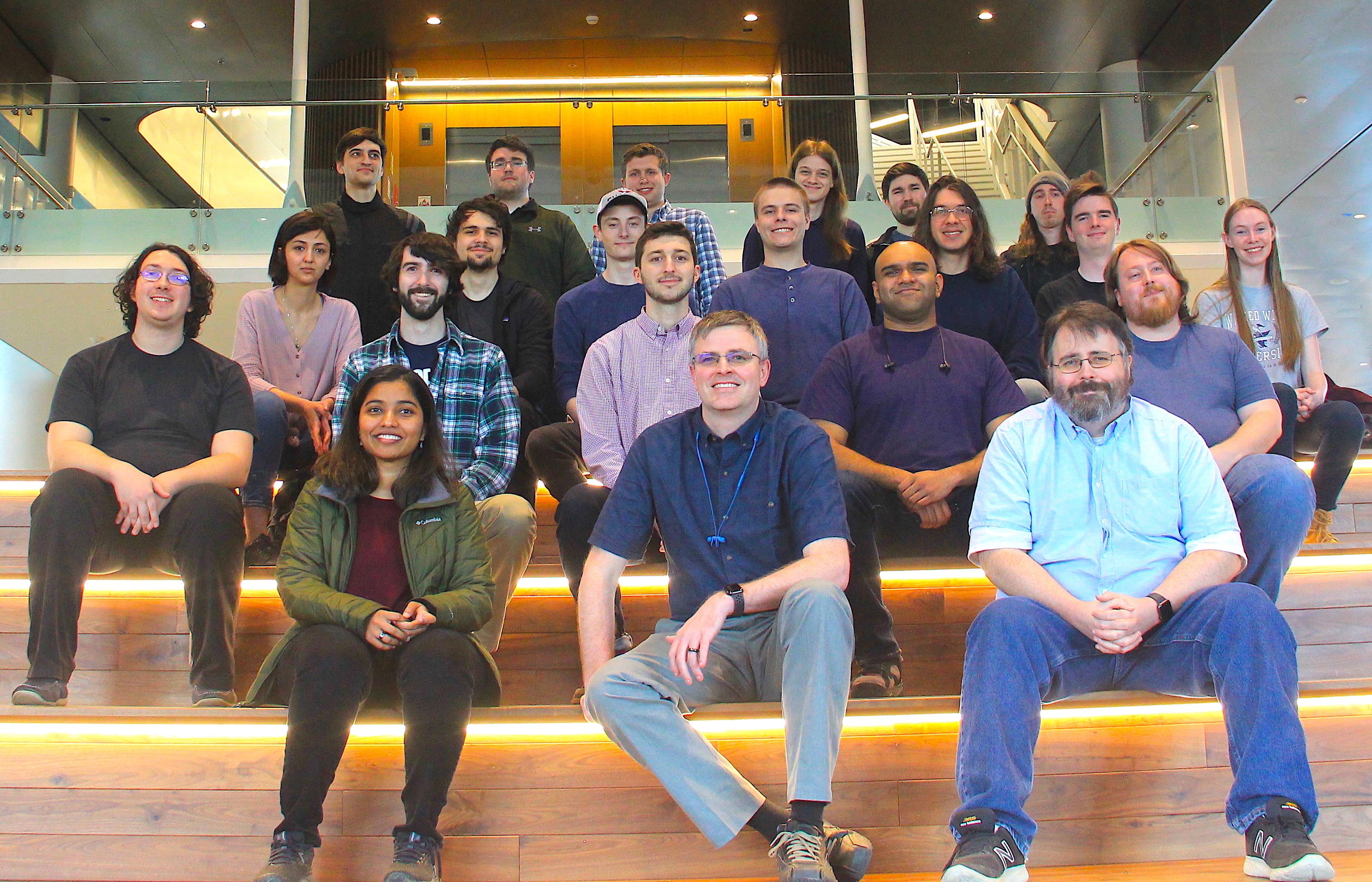
From developing new computational approaches for improving cancer treatments to creating virtual reality training tools for police officers, the University of Maryland Institute for Advanced Computer Studies (UMIACS) is well known for its research and innovation that spans multiple disciplines.
The institute’s 80 faculty and 200-plus graduate students rely heavily on powerful computing resources to accomplish their work. To that end, UMIACS employs eight full-time engineers and developers tasked with building, managing and maintaining security over numerous computing, storage and networking infrastructures.
Equally important to the institute’s success are the 20 undergraduates staffing the UMIACS Help Desk. Working from their new space on the third floor of the Brendan Iribe Center for Computer Science and Engineering, Help Desk staff are responsible for providing support that comes in all shapes and sizes: from uploading new software on a laptop to helping build and maintain a million-dollar GPU cluster used for computer vision applications.
The goal of the Help Desk, says Derek Yarnell, director of computing facilities for UMIACS, is to provide direct support for the institute’s mission, while also offering invaluable training for students to gain hands-on experience with the latest computing technologies.
“We want our student workers to be fully prepared to succeed in the next stage of their careers, wherever that may be,” Yarnell says.
Original tech support for UMIACS started in the mid-1990s, with one or two people handling any inquiries via email only. Fritz McCall, the former director of computing facilities for UMIACS, felt that if his idea for a Help Desk was to flourish, then a dedicated space and face-to-face interaction were needed.
McCall established a space in the A.V. Williams Building (former home to UMIACS) and began to implement the system that is still in place today—hiring and training teams of student workers to assist full-time staff.
(Note: McCall left UMIACS in 2016 to become director of research computing for the university. He died unexpectedly a year later, but his legacy lives on through the campus-wide respect given to the UMIACS Help Desk that he founded.)
Students employed at the Help Desk earn more than just a salary. The opportunity to work side-by-side with senior engineers on complex computing problems has proven invaluable to many students that cycle through several semesters of employment.
“Not only have we had great students who’ve become part of our full-time staff, we’ve also had amazing success stories for those who have gone on to work in the public and private sector—from commercial firms like Google or Facebook to defense contractors and governmental agencies,” Yarnell says. “We are always positioning UMIACS as a place where you can expand your talents and get opportunities to grow.”
Since 1997, the Help Desk has hired 24 students that later transitioned into full-time UMIACS tech staff personnel. Six of the eight current members of the institute’s technical staff are former student workers.
Matt Baney started his career at UMIACS as a student employee in 2013. In addition to his current role as a full-time engineer at UMIACS, he also manages the hiring process for new student employees.
“We look for students that have tried things, even if they’ve failed at them,” Baney says. “We also want students that are willing to say that they don’t know instead of trying to fake it—especially when they’re talking to people that really do know. And most importantly, we look for students that seem genuinely eager to learn.”
A majority of the students hired are computer science majors, Baney says, but the next most common major is computer engineering, followed by information science.
Lucia Kim, a senior majoring in computer science, worked at the Help Desk for nine months. She was attracted to the position because of the opportunity to get experience working with hardware and enterprise IT systems.
“Overall, my experience was very positive,” Kim says. “Although there was a learning curve, there was a lot of support and aid from fellow co-workers as well as managers. I also thought the supervisory style of the managers was really nice since they try to avoid micromanaging the students.”
Mike Ritter is currently a full-time research programmer working with Joseph JaJa, a professor in UMIACS and interim chair of the Department of Electrical and Computer Engineering.
Like others, Ritter first worked for the Help Desk as an undergraduate for 18 months before graduating and coming to work full-time at the university.
“Getting to work with all the tech was exciting, but also meeting other student staff helped to motivate involvement in different aspects of the tech stack at UMIACS—areas like security, visualization, and related topics,” Ritter says.
Ritter is now assisting JaJa on a digital preservation project that involves the University of California San Diego, UMIACS, Texas Digital Library (TDL), and the National Center for Atmosphere Research (NCAR).
His former employment with the UMIACS Help Desk comes in handy with his current job, he says.
“The UMIACS tech staff is very capable, and given the close working relationship we already have, they are very receptive to our project’s needs and requirements.”
—Story by Melissa Brachfeld